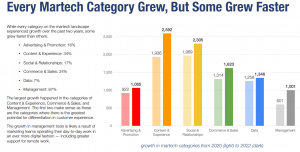In The Office, Steve Carrell masterfully plays manager Michael Scott, who’s not-so-secret arch enemy is Toby, the meek and oft-maligned HR guy. Throughout the show, Scott is happy to openly share with everyone his opinions that HR staff are merely paper-pushers who have little to offer strategically in the realm of performance management. While this negative image of HR may give us laughs in The Office, it also represents the real life relationship between upper management and Human Resources departments at many companies.
In recent years some experts have called for the total end of HR as a staffed role within a company. In this piece, I reference 3 articles from the latest issue of Harvard Business Review (HBR), whose cover boldly states, “It’s Time To Blow Up HR”. I argue that at the very least we need to reassess the role of HR within the company structure; we need to place people-management back in the hands of people managers, with HR ‘s role supporting them in maintaining a strong company culture.
We can no longer view people as company “resources” to be cataloged, attributed a value, and leveraged, and who are seen as interchangeable and replaceable cogs in the machine. We will look at ways that businesses today can create a space where employees can bring their whole selves to work every day to be more innovative, productive, and engaged.
Moving towards an ongoing conversation
According to Peter Cappelli, the popularity of HR ebbs and flows with the economic tide. During the Great Depression when jobs were in extremely high demand, workers were threatened and even abused verbally and physically. But when talent is in short supply (like software engineering jobs in Silicon Valley over the last few years), HR is seen as a valuable and strategic partner.
Cappelli argues that in this modern business environment, managers must focus more on “people and culture” and stop treating employees like resources, thus creating a more sustainable system of people management that would be immune to the economic fluctuations at the heart of Cappelli’s argument.
One of the trends that we are seeing in the last couple of years is that companies are shifting away from traditional performance reviews, getting rid of them altogether or only using them as part of an overall performance management strategy. In an HBR issue published earlier this year, Deloitte announced that they would reinvent performance reviews based on findings that “the best team leaders revealed that they conduct regular check-ins with each team member about near-term work.”
As managers continue with outdated practices like once-a-year performance reviews, they are extending the timeline for improving their companies. They could be building a better infrastructure of performance management instead of patching up deteriorating staples of corporate procedure. When employee relationships are solely a manager’s responsibility, they will have no one to blame but themselves for poor performance.
Cappelli presents the case studies of PwC and Juniper Networks who have also abandoned traditional performance appraisals, which Cappelli refers to as “perhaps the most reviled standard practice in all of management.” These successful organizations have moved towards a model of ongoing conversation designed to improve skills and results, instead of relying on yearly check-ins that managers and employees dislike for a multitude of reasons.
Providing energy creators
The authors of a recent article entitled People Before Strategy: A New Role for the CHRO argue that instead of getting rid of HR, that it’s time for companies to create a core group of leaders comprised of the CEO, CFO, and Head of Human Resources (CHRO).
For starters, they claim that this will improve communication between executives. According to the authors, “Motorola might have been able to anticipate the iPhone if the company’s CHRO had alerted the CEO when Apple began trying to recruit Motorola’s technical people.”
The authors state that “most problems are people problems” and call on HR to examine the cause of ruptures in an organization. There are technological solutions to these people problems. Employee feedback and culture management software allows managers to be aware of problems and to quickly address them.
Another positive impact of weekly check-ins is the discovery of what the authors call energy creators: “[They] may not directly be charged with producing results, but they get to the heart of issues, reframe ideas, create informal bonds that encourage collaboration, and make the org healthier and more productive.” Leaders like these energy creators exists at all levels of an organization regardless of title. Regular feedback allows managers to discover and nurture these hidden proclivities in their talent, utilizing existing employee traits to enhance company culture.
Human Resource managers (or managers and executives who own relationships with their employees) have to look at their company ecosystem and see how people work together:
Organizations do not need Human Resources departments to act as relationship cops. This is abdicating responsibility. Instead, leadership can train managers to raise their emotional intelligence. This is what the authors of the article suggest when they say that managers and executives must become more “people savvy.”
Focusing on the positives
Steven Rice and John Boudreau also take a swing at performance reviews, especially stack ranking. This practice involves grading employees along a bell-curve and often terminating the lowest percentile rank. The article introduces research by David Rock to explain why this process is detrimental:
When people realize that they are being compared with others, a ‘threat response’ in their brain sends cortisol levels skyrocketing and makes it hard for them to take in other information.
Many successful companies have designed a culture of trust. People are encouraged to work together, collaborate and take risks. Forced rankings create a competitive environment that stifles these behaviours. Juniper replaced their annual reviews with regular “conversation days” so that managers can aid performance, align employees around goals and help people achieve their career aspirations.
Technology has created an environment where innovation is now a major differentiating factor for businesses. Basic tasks can be streamlined via software or delegated completely, leaving space for people to contribute primarily via innovation. Innovation flows through the creation of trusting environments, where people don’t feel that they will be fired for poor performance. Rather, they will know that issues will be surfaced via communication and that they will be given support and training around challenges. In these supportive workplaces, people contribute their best ideas because they are naturally having more of them.
I lead a relatively small team (less than twenty people), and have implemented automated weekly feedback to uncover challenges, support employees, and create a culture where people feel safe and supported. Instead of annual reviews, I am constantly aware of the progress of each member of my team. I provide them with feedback and support as needed.
Getting to know employees and developing trusting relationships is the responsibility of every people manager. By building trust via these direct relationships we can call forth the best from employees and cure problems like disengagement and lack of productivity. We don’t necessarily need to “blow up HR,” as the HBR articles suggest, but we do need to blow up any business system or institution that no longer works. The alternatives are just too costly.
Business & Finance Articles on Business 2 Community(142)






